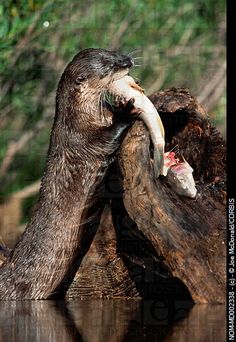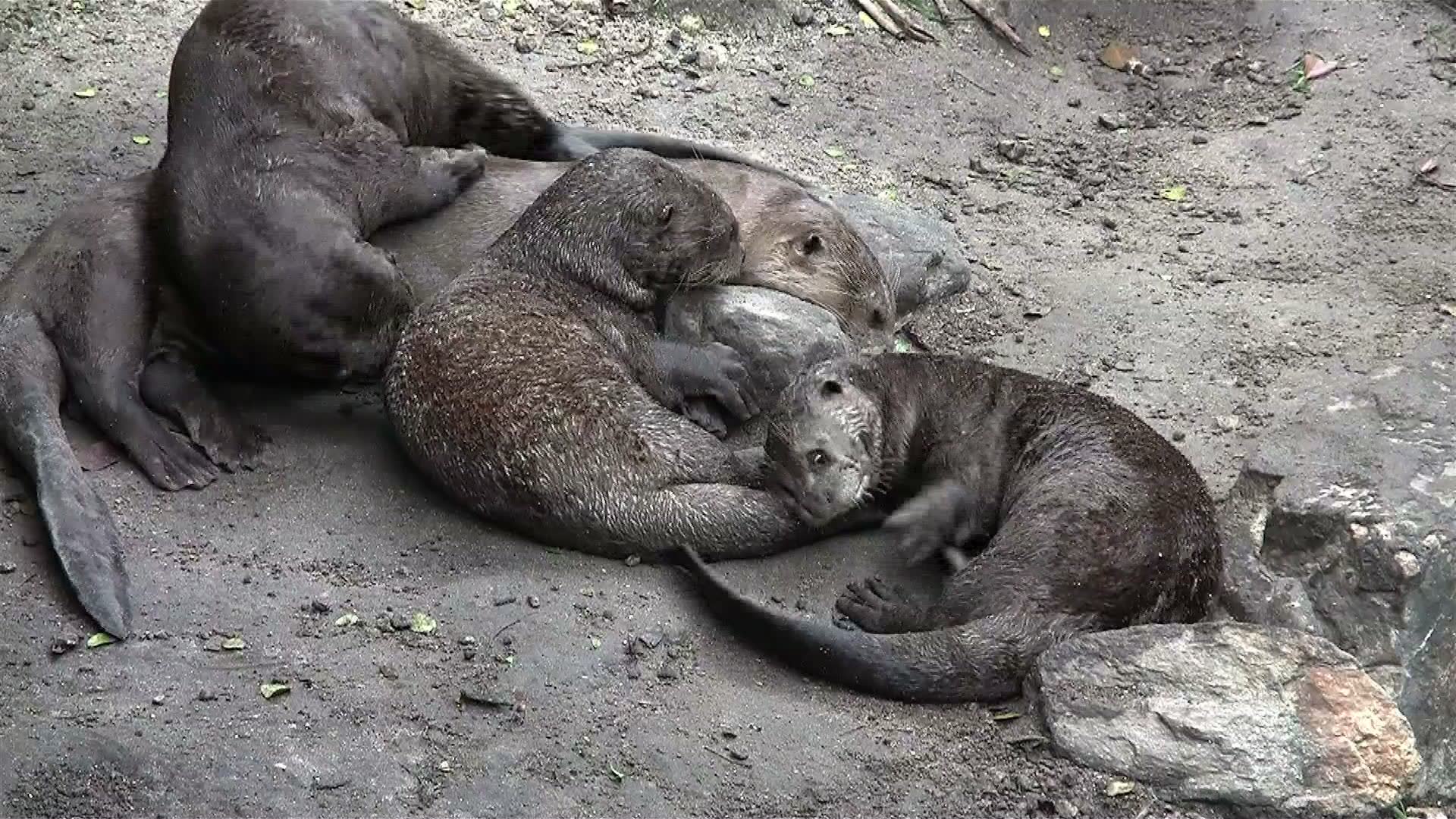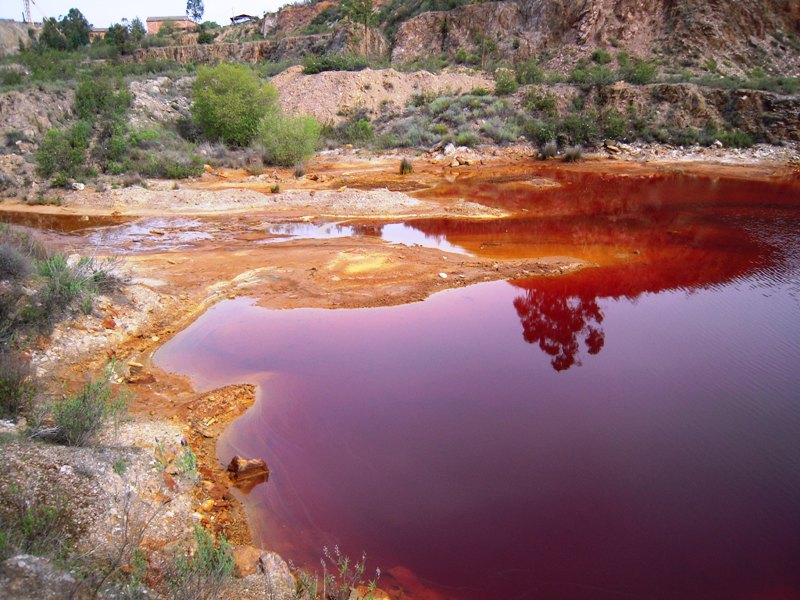Interactions
The Pteronura brasiliensis interact with many different species. The predatory relationships it maintains with its food source consists mainly of catfish, cichlid, and characin families, but they have also been known to prey on crustaceans, snakes, and caiman when times are tough (Ribas et al. 2012).
The giant river otter hunts both on its own and in groups. Interactions within their own species are variable. They typically live with four to seven other otters and occupy a space of about 12 square kilometers. Each family usually consists of one adult pair and several generations of their offspring. They hunt, feed, groom, sleep, play, communicate, and travel together, but they are also very territorial animals. They mark their territory with excretions, and if another individual intrudes, they may attack to protect their habitat and young (Duplaix et al. 2008). The giant river otter has had 9 vocalizations documented, most likely to assist in warnings of predators and contacting others. The gila monster is another very territorial organism. Learn about how this venomous lizard protects its territory.
The Pteronura brasiliensis does not have many predators, as it is an apex predator of its habitat. Young offspring are sometimes taken by alligators, large cats, or harmed by human pollution. The main threat to this species is overfishing, illegal hunting, and habitat contaminants (Ribas et al. 2012). The giant river otter does have some parasitic relationships, mostly consisting of helminth parasites or flatworms (Vieira et al. 2008).
The Pteronura brasiliensis has been listed as vulnerable since 1982 and endangered since 2000 (Duplaix et al. 2008). Their population has been continually decreasing due to human invasion and destruction of their habitats, hunting of giant otters for their fur, and the depletion of their food supply. There is also a lot of mercury poisoning in the areas they occupy because human gold mining has become more popular. If nothing is done about the habitat destruction, the entire otter population could be reduced by 50 percent within the next 20 years (Duplaix et al. 2008).
Are you looking to be amazed? Click on the facts link next!
<Reproduction< >Facts>


